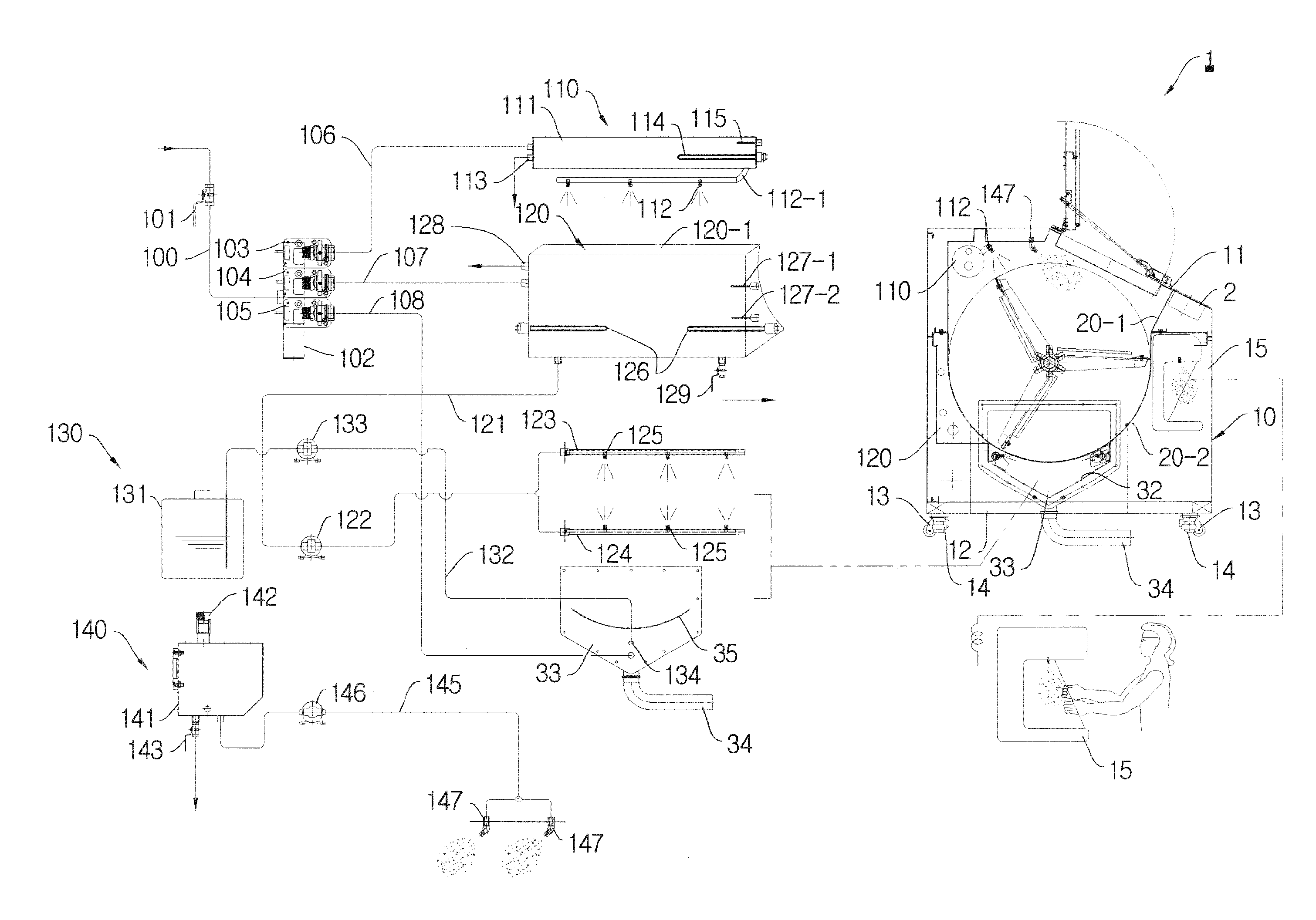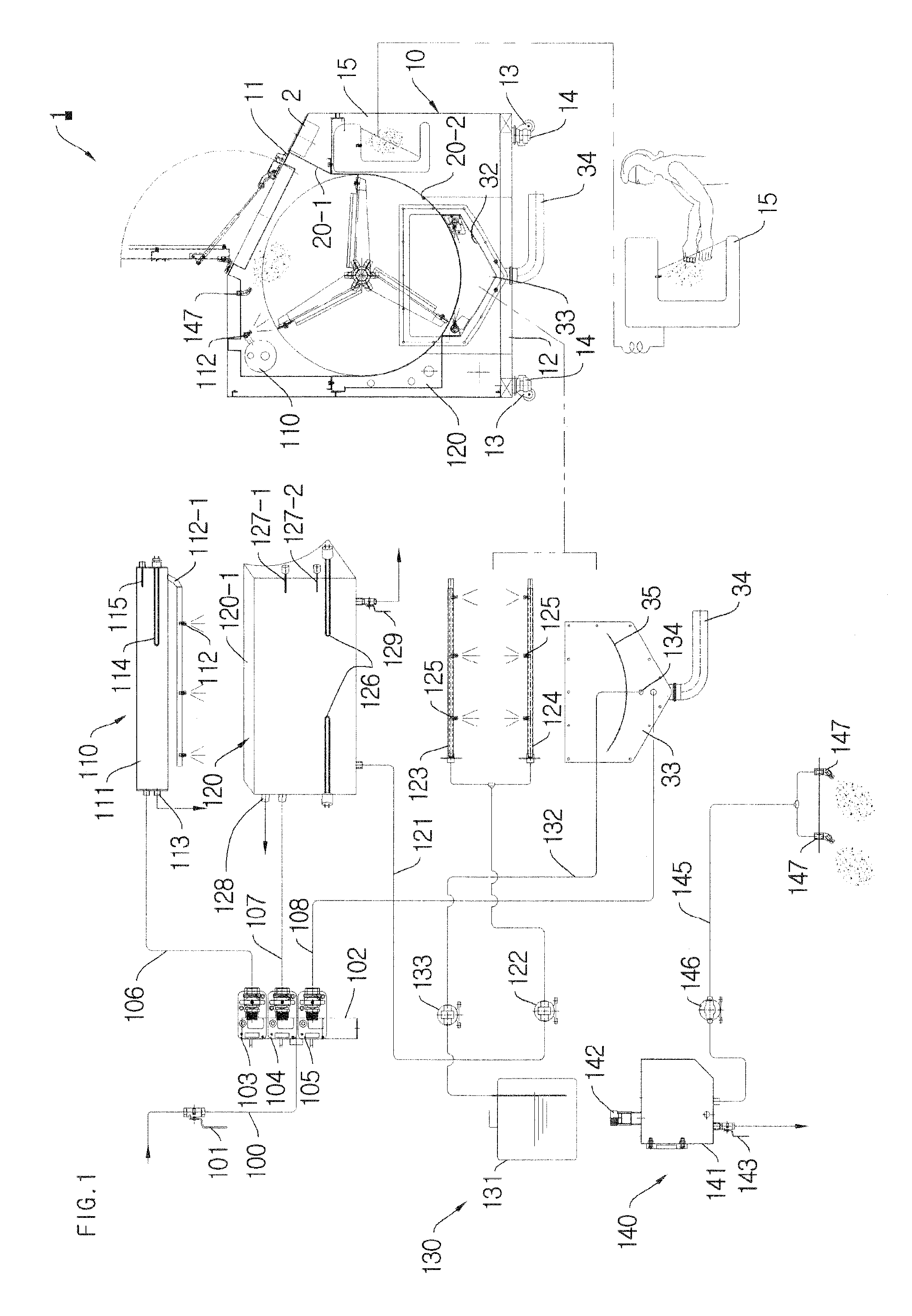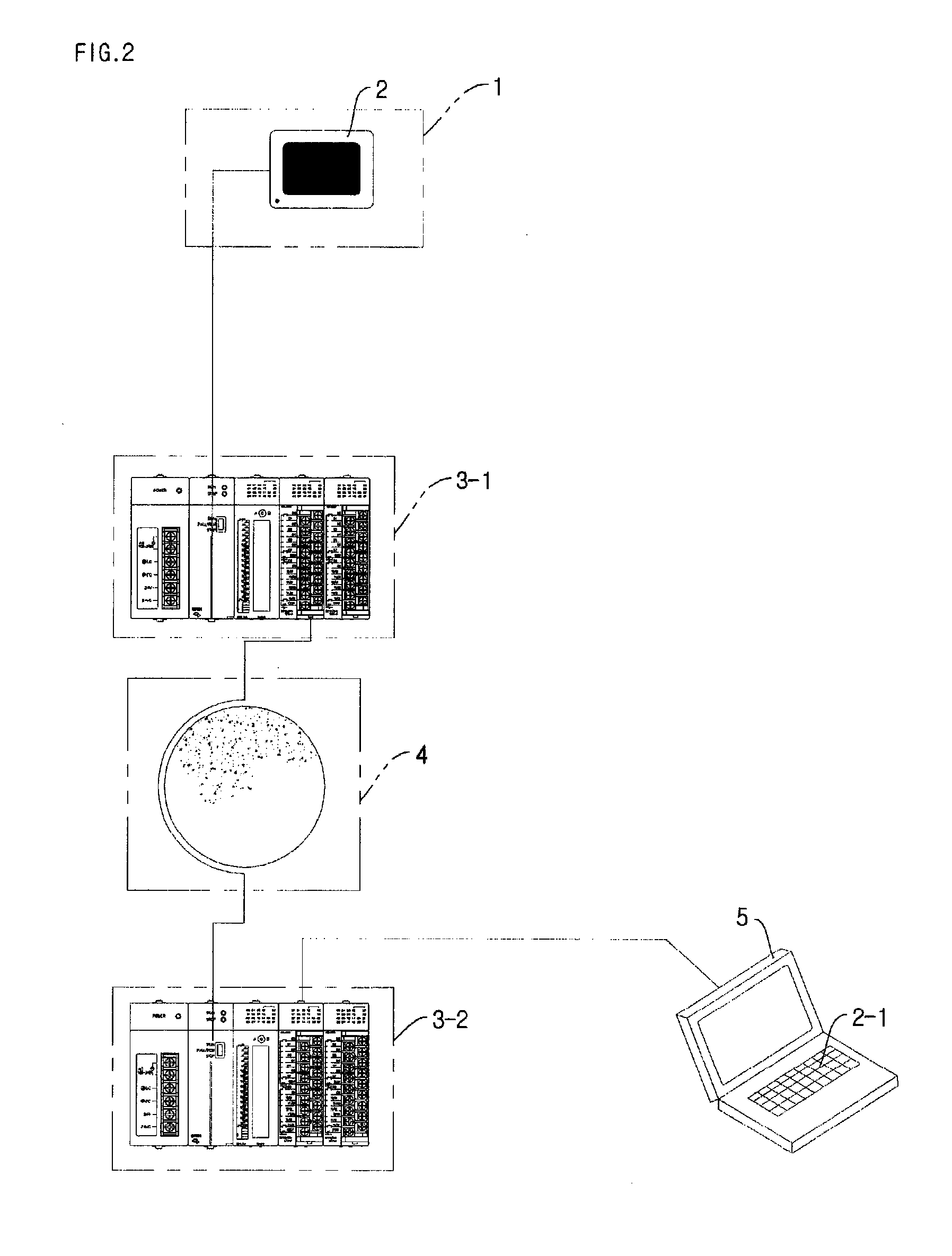Food waste disposal system
a food waste and disposal system technology, applied in the field of food waste disposal system, can solve the problems of insufficient disposal efficiency and capacity, contamination of ground water, and inability to reduce some organic matter by conventional methods and apparatuses, and achieve the effects of promoting the decomposition of food waste, facilitating fabrication and repair, and good appearan
- Summary
- Abstract
- Description
- Claims
- Application Information
AI Technical Summary
Benefits of technology
Problems solved by technology
Method used
Image
Examples
Embodiment Construction
[0030]Hereinafter, a preferred embodiment of the invention will be described in detail with reference to the accompanying drawings. FIGS. 1, 2, 3A to 3C, 4A to 4B, 5A to 5B, 6A to 6C, 7A to 7B, 8, 9A to 9D and 10A to 10D show a food waste disposal system 1 according to one embodiment of the invention, in which FIG. 1 is a schematic view illustrating the food waste disposal system 1 according to one embodiment of the invention, FIG. 2 is a flow diagram illustrating an operation flow of the food waste disposal system 1, FIGS. 3A to 3C are front plan views, FIGS. 4A to 4B are side plan views, and FIGS. 5A to 5B are top plan views illustrating the structure of the food waste disposal system 1, FIGS. 6A to 6C and 7A to 7B are schematic views illustrating the structure of a prefabricated mixing basin 20 and the structure of a chamber 35, FIG. 8 is a sectional view illustrating a door 60, and FIGS. 9A to 9D and 10A to 10D are schematic views illustrating the structure of a prefabricated mi...
PUM
 Login to View More
Login to View More Abstract
Description
Claims
Application Information
 Login to View More
Login to View More - R&D
- Intellectual Property
- Life Sciences
- Materials
- Tech Scout
- Unparalleled Data Quality
- Higher Quality Content
- 60% Fewer Hallucinations
Browse by: Latest US Patents, China's latest patents, Technical Efficacy Thesaurus, Application Domain, Technology Topic, Popular Technical Reports.
© 2025 PatSnap. All rights reserved.Legal|Privacy policy|Modern Slavery Act Transparency Statement|Sitemap|About US| Contact US: help@patsnap.com



